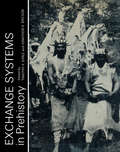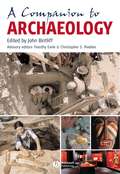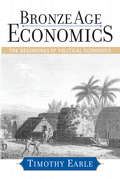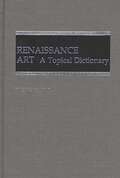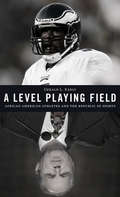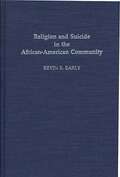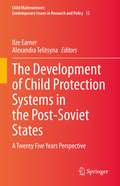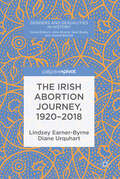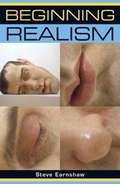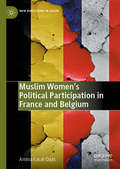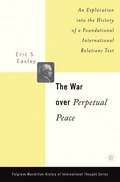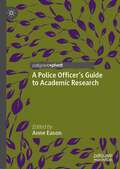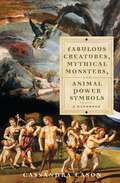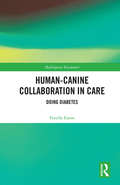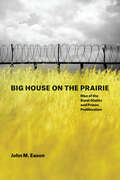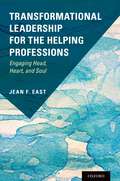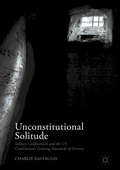- Table View
- List View
A Companion to Archaeology
by Timothu Earle Christopher PeeblesA Companion to Archaeology features essays from 27 of the world’s leading authorities on different types of archaeology that aim to define the field and describe what it means to be an archaeologist. Shows that contemporary archaeology is an astonishingly broad activity, with many contrasting specializations and ways of approaching the material record of past societies. Includes essays by experts in reading the past through art, linguistics, or the built environment, and by professionals who present the past through heritage management and museums. Introduces the reader to a range of archaeologists: those who devote themselves to the philosophy of archaeology, those who see archaeology as politics or anthropology, and those who contend that the essence of the discipline is a hard science.
Bronze Age Economics: The First Political Economies
by Timothy EarleThis integrated collection of new and newly revised essays by archaeologist Timothy Earle represents both a personal journey and a growing synthesis of how political economies emerged in human societies. Drawing in detail on the cases of chiefdoms in Hawaii, the Andes, and Denmark, Bronze Age Economics documents how intensification of economies, surplus mobilization, and controlled distribution of both staple and prestige goods fundamentally drove the political evolutionary processes that prefigured states. Representing as it does the trajectory of Earle's lifework, this book fairly encapsulates the history of processual archaeology and social evolutionary theory over the past quarter century.
Bronze Age Economics: The First Political Economies
by Timothy Earle"Timothy Earle has set out to offer the most comprehensive view now available of the economic foundations of early societies, and it may well be that he has succeeded. Bronze Age Economics is a pioneering contribution to archaeological theory." —Colin Renfrew, University of Cambridge
Renaissance Art: A Topical Dictionary
by Irene EarlsThis dictionary is a quick and useful reference source for identifying and understanding the Renaissance art of Italy and northern Europe. Arranged in alphabetical sequence, the more than eight hundred entries provide basic information about topics that were common subjects in painting, sculpture, and decorative arts of the period. Additionally, entries on characteristic schools, techniques, media, and other terminology have been included as background information as well as to provide an art history vocabulary necessary for comprehending or clarifying certain topics. Supplemental information on various related topics is cross-referenced for easy access, and the reader is provided with an even more complete location of topics and other entries with see references and a subject index. As an aid to further study, a list of northern and Italian Renaissance artists, which includes life dates and nationalities, has been included. A bibliography is also provided for further reference.
A Level Playing Field: African American Athletes And The Republic Of Sports (Alain Locke Lectures Series (hup) Ser. #1)
by Gerald Lyn EarlyThe noted cultural critic Gerald Early explores the intersection of race and sports, and our deeper, often contradictory attitudes toward the athletes we glorify. What desires and anxieties are encoded in our worship of (or disdain for) high-performance athletes? What other, invisible contests unfold when we watch a sporting event?
Religion and Suicide in the African-American Community (Contributions in Afro-American and African Studies: Contemporary Black Poets)
by Kevin E. EarlySuicide among African Americans occurs at about half the rate with which it occurs among white Americans. Why is the black rate of suicide so much lower, particularly when one considers the effects of racism and other socio-economic factors on African Americans? One answer that has been offered is that churches within the African-American community have a greater influence than among white Americans and that they provide amelioration of social forces that would otherwise lead to suicide.To date no other book has provided an in-depth ethnographic study of the buffering effect of the black church against suicide. Findings from Early's study indicate that there is a consensus within the black community in terms of its attitudes and beliefs toward suicide. Early concludes that suicide is alien to underlying African-American belief systems and a complete denial of what it means to be black. This important study will be invaluable to sociologists and others studying contemporary race relations and social problems.
The Development of Child Protection Systems in the Post-Soviet States: A Twenty Five Years Perspective (Child Maltreatment #12)
by Ilze Earner Alexandra TelitsynaThis volume provides an understanding of how systems of child protection evolve in disparate cultural, social and economic contexts. Using the former Soviet Union as a starting point, it examines how 13 countries have developed, defined and evolved their system of protecting children and providing services to families over the last 25 years since independence. The volume runs an uniform approach in each country and then traces the development of unique systems, contributing to the international understanding of child protection and welfare. This volume is a fascinating study for social scientists, social workers, policy makers with particular interest to those focusing on children, youth, and family issues alike as each chapter offers a clear and compelling view of the central changes, competing claims and guiding assumptions that have formed each countries individual approach to child protection and family services.
The Irish Abortion Journey, 1920–2018 (Genders and Sexualities in History)
by Lindsey Earner-Byrne Diane UrquhartThis book reframes the Irish abortion narrative within the history of women’s reproductive health and explores the similarities and differences that shaped the history of abortion within the two states on the island of Ireland. Since the legalisation of abortion in Britain in 1967, an estimated 200,000 women have travelled from Ireland to England for an abortion. However, this abortion trail is at least a century old and began with women migrating to Britain to flee moral intolerance in Ireland towards unmarried mothers and their offspring. This study highlights how attitudes to unmarried motherhood reflected a broader cultural acceptance that morality should trump concerns regarding maternal health. This rationale bled into social and political responses to birth control and abortion and was underpinned by an acknowledgement that in prioritising morality some women would die.
Beginning Realism (Beginnings)
by Steven EarnshawRealism is an essential concept in literary studies, yet for a variety of reasons it has not received the attention and clarity it deserves, often being dismissed as ‘too slippery’ to be of use. This accessible study remedies that failing for students and scholars of English Literature and Literary Theory alike, plainly setting out what realism is, the issues surrounding it, and its role in other major literary modes such as modernism and postmodernism. Beginning Realism gives detailed coverage of the nineteenth-century realist novel through its focus on novels by Gaskell, Eliot, Trollope, Dickens, Mrs Oliphant, Thackeray and Zola. As well as discussing ‘the novel’, the book also includes chapters on the use of realism in drama and poetry and a chapter on ‘the language of realism’, another aspect often overlooked in analysis of the concept.
Muslim Women’s Political Participation in France and Belgium (New Directions in Islam)
by Amina Easat-DaasThis book outlines the principal motivations, opportunities and barriers to Muslim women’s political participation in France and francophone Belgium. Easat-Daas draws on in-depth comparative contextual analysis along with semi-structured interview material with women from France and Belgium who self-identify as Muslim and are active in a variety of modes of political participation, such European Parliamentarians, Senators, councilwomen, trade-union activists and those engaged in grass-roots political movements. This provides an alternative framing of Muslim women, removed from the tired and often exaggerated stereotypes that portray them as passive objects or sources of threat, instead highlighting their remarkable resilience and consistent determination. Through exploring the intersecting fault lines of racial, Islamophobic and gendered struggles of Muslim women in these two cases, this book also sheds new light on the role of ‘European Islam’, political opportunity structures, secularism and Muslim women’s dress.
The War Over Perpetual Peace: An Exploration into the History of a Foundational International Relations Text (The Palgrave Macmillan History of International Thought)
by E. EasleyThis book examines the various competing interpretations of Kant's foundational Perpetual Peace since its initial publication in the late eighteenth-century. According to Easley's analysis, there are two patterns of interpretations: 1) the text endorses peace proposals above the state level, 2) the text is in favour of peace proposals at the state level. The principal explanation for these two patterns resides in the rise and fall of hopes for peace through international organizations. It can also be attributed to the rise in the number of liberal states over time. Eric Easley provides a comprehensive historical background and analytical framework for understanding Perpetual Peace, allowing scholars of international relations to better understand and appreciate its complex meaning and see beyond the conventionally accepted interpretations of the day.
A Police Officer’s Guide to Academic Research
by Anne EasonThis book highlights how the practical skills of the police officer can be transferred into the realm of academic research and support them in becoming part of the evidence-based policing movement. It starts by exploring the professionalisation of the police service through higher education accreditation and the different methodologies of social research practice. Using operational comparisons and a little humour, it guides the reader through the swamp of concepts and processes, such as ethical approval, research paradigms and data gathering and analysis. It then takes them on a journey of reflection and reflexivity, challenging their own perspective on policing and working within the wider criminal justice sector and how they can make a valuable contribution to the development of policing practice.
Fabulous Creatures, Mythical Monsters, and Animal Power Symbols: A Handbook
by Cassandra EasonEason provides an extensive overview of the mythology, legends, and folklore surrounding fabulous and strange fantasy creatures from diffferent lands and ages, from Chinese dragons and the Native North American thunderbird to the demon hounds of Celtic and Norse legend. She describes how in various ages and cultures people have identified with the idealized qualities of wise creatures as a source of power and better understanding of their own personalities and used the behavior of birds and other sacred creatures to gain oracular information in Ancient Egypt and the Classical and Celtic worlds.This book offers both traditional and little known folklore and legend about familiar real life creatures such as the horse, the cat, and the raven and delves into the weird and wonderful world of saints who claimed to change into deer and modern cryptozoological monsters such as Bigfoot, Mothman, and lake and sea monsters, as well as the rationale behind animal or headed deities of the Aztecs, Egyptians, and Celts in whose name people went to war.
Human-Canine Collaboration in Care: Doing Diabetes (Multispecies Encounters)
by Fenella EasonAdopting an anthrozoological perspective to study the participation of non-human animals in regimes of care, this book examines the use of canine scent detection to alert 'hypo-unaware' individuals to symptoms of human chronic illness. Based on ethnographic research and interviews, it focuses on the manner in which trained assistance dogs are able to use their sense of smell to alert human companions with Type 1 diabetes to imminent hypoglycaemic episodes, thus reducing the risk of collapse into unconsciousness, coma or, at worst, death. Through analyses of participant narrations of the everyday complexities of 'doing' diabetes with the assistance of medical alert dogs, the author sheds light on the way in which each human-canine dyad becomes acknowledged as a team of ‘one’ in society. Based on the concept of dogs as friends and work colleagues, as animate instruments and biomedical resources, the book raises conceptual questions surrounding the acceptable use of animals and their role within society. As such, this volume will appeal to scholars across the social sciences with interests in human-animal interactions and intersections. It may also appeal to healthcare practitioners and individuals interested in innovative multispecies methods of managing chronic illness.
Human-Canine Collaboration in Care: Doing Diabetes (Multispecies Encounters)
by Fenella EasonAdopting an anthrozoological perspective to study the participation of non-human animals in regimes of care, this book examines the use of canine scent detection to alert 'hypo-unaware' individuals to symptoms of human chronic illness. Based on ethnographic research and interviews, it focuses on the manner in which trained assistance dogs are able to use their sense of smell to alert human companions with Type 1 diabetes to imminent hypoglycaemic episodes, thus reducing the risk of collapse into unconsciousness, coma or, at worst, death. Through analyses of participant narrations of the everyday complexities of 'doing' diabetes with the assistance of medical alert dogs, the author sheds light on the way in which each human-canine dyad becomes acknowledged as a team of ‘one’ in society. Based on the concept of dogs as friends and work colleagues, as animate instruments and biomedical resources, the book raises conceptual questions surrounding the acceptable use of animals and their role within society. As such, this volume will appeal to scholars across the social sciences with interests in human-animal interactions and intersections. It may also appeal to healthcare practitioners and individuals interested in innovative multispecies methods of managing chronic illness.
Big House on the Prairie: Rise of the Rural Ghetto and Prison Proliferation
by John M. EasonFor the past fifty years, America has been extraordinarily busy building prisons. Since 1970 we have tripled the total number of facilities, adding more than 1,200 new prisons to the landscape. This building boom has taken place across the country but is largely concentrated in rural southern towns. In 2007, John M. Eason moved his family to Forrest City, Arkansas, in search of answers to key questions about this trend: Why is America building so many prisons? Why now? And why in rural areas? Eason quickly learned that rural demand for prisons is complicated. Towns like Forrest City choose to build prisons not simply in hopes of landing jobs or economic wellbeing, but also to protect and improve their reputations. For some rural leaders, fostering a prison in their town is a means of achieving order in a rapidly changing world. Taking us into the decision-making meetings and tracking the impact of prisons on economic development, poverty, and race, Eason demonstrates how groups of elite whites and black leaders share power. Situating prisons within dynamic shifts that rural economies are undergoing and showing how racially diverse communities lobby for prison construction, Big House on the Prairie is a remarkable glimpse into the ways a prison economy takes shape and operates.
Big House on the Prairie: Rise of the Rural Ghetto and Prison Proliferation
by John M. EasonFor the past fifty years, America has been extraordinarily busy building prisons. Since 1970 we have tripled the total number of facilities, adding more than 1,200 new prisons to the landscape. This building boom has taken place across the country but is largely concentrated in rural southern towns. In 2007, John M. Eason moved his family to Forrest City, Arkansas, in search of answers to key questions about this trend: Why is America building so many prisons? Why now? And why in rural areas? Eason quickly learned that rural demand for prisons is complicated. Towns like Forrest City choose to build prisons not simply in hopes of landing jobs or economic wellbeing, but also to protect and improve their reputations. For some rural leaders, fostering a prison in their town is a means of achieving order in a rapidly changing world. Taking us into the decision-making meetings and tracking the impact of prisons on economic development, poverty, and race, Eason demonstrates how groups of elite whites and black leaders share power. Situating prisons within dynamic shifts that rural economies are undergoing and showing how racially diverse communities lobby for prison construction, Big House on the Prairie is a remarkable glimpse into the ways a prison economy takes shape and operates.
Big House on the Prairie: Rise of the Rural Ghetto and Prison Proliferation
by John M. EasonFor the past fifty years, America has been extraordinarily busy building prisons. Since 1970 we have tripled the total number of facilities, adding more than 1,200 new prisons to the landscape. This building boom has taken place across the country but is largely concentrated in rural southern towns. In 2007, John M. Eason moved his family to Forrest City, Arkansas, in search of answers to key questions about this trend: Why is America building so many prisons? Why now? And why in rural areas? Eason quickly learned that rural demand for prisons is complicated. Towns like Forrest City choose to build prisons not simply in hopes of landing jobs or economic wellbeing, but also to protect and improve their reputations. For some rural leaders, fostering a prison in their town is a means of achieving order in a rapidly changing world. Taking us into the decision-making meetings and tracking the impact of prisons on economic development, poverty, and race, Eason demonstrates how groups of elite whites and black leaders share power. Situating prisons within dynamic shifts that rural economies are undergoing and showing how racially diverse communities lobby for prison construction, Big House on the Prairie is a remarkable glimpse into the ways a prison economy takes shape and operates.
Big House on the Prairie: Rise of the Rural Ghetto and Prison Proliferation
by John M. EasonFor the past fifty years, America has been extraordinarily busy building prisons. Since 1970 we have tripled the total number of facilities, adding more than 1,200 new prisons to the landscape. This building boom has taken place across the country but is largely concentrated in rural southern towns. In 2007, John M. Eason moved his family to Forrest City, Arkansas, in search of answers to key questions about this trend: Why is America building so many prisons? Why now? And why in rural areas? Eason quickly learned that rural demand for prisons is complicated. Towns like Forrest City choose to build prisons not simply in hopes of landing jobs or economic wellbeing, but also to protect and improve their reputations. For some rural leaders, fostering a prison in their town is a means of achieving order in a rapidly changing world. Taking us into the decision-making meetings and tracking the impact of prisons on economic development, poverty, and race, Eason demonstrates how groups of elite whites and black leaders share power. Situating prisons within dynamic shifts that rural economies are undergoing and showing how racially diverse communities lobby for prison construction, Big House on the Prairie is a remarkable glimpse into the ways a prison economy takes shape and operates.
Big House on the Prairie: Rise of the Rural Ghetto and Prison Proliferation
by John M. EasonFor the past fifty years, America has been extraordinarily busy building prisons. Since 1970 we have tripled the total number of facilities, adding more than 1,200 new prisons to the landscape. This building boom has taken place across the country but is largely concentrated in rural southern towns. In 2007, John M. Eason moved his family to Forrest City, Arkansas, in search of answers to key questions about this trend: Why is America building so many prisons? Why now? And why in rural areas? Eason quickly learned that rural demand for prisons is complicated. Towns like Forrest City choose to build prisons not simply in hopes of landing jobs or economic wellbeing, but also to protect and improve their reputations. For some rural leaders, fostering a prison in their town is a means of achieving order in a rapidly changing world. Taking us into the decision-making meetings and tracking the impact of prisons on economic development, poverty, and race, Eason demonstrates how groups of elite whites and black leaders share power. Situating prisons within dynamic shifts that rural economies are undergoing and showing how racially diverse communities lobby for prison construction, Big House on the Prairie is a remarkable glimpse into the ways a prison economy takes shape and operates.
Big House on the Prairie: Rise of the Rural Ghetto and Prison Proliferation
by John M. EasonFor the past fifty years, America has been extraordinarily busy building prisons. Since 1970 we have tripled the total number of facilities, adding more than 1,200 new prisons to the landscape. This building boom has taken place across the country but is largely concentrated in rural southern towns. In 2007, John M. Eason moved his family to Forrest City, Arkansas, in search of answers to key questions about this trend: Why is America building so many prisons? Why now? And why in rural areas? Eason quickly learned that rural demand for prisons is complicated. Towns like Forrest City choose to build prisons not simply in hopes of landing jobs or economic wellbeing, but also to protect and improve their reputations. For some rural leaders, fostering a prison in their town is a means of achieving order in a rapidly changing world. Taking us into the decision-making meetings and tracking the impact of prisons on economic development, poverty, and race, Eason demonstrates how groups of elite whites and black leaders share power. Situating prisons within dynamic shifts that rural economies are undergoing and showing how racially diverse communities lobby for prison construction, Big House on the Prairie is a remarkable glimpse into the ways a prison economy takes shape and operates.
Transformational Leadership for the Helping Professions: Engaging Head, Heart, and Soul
by Jean F. EastTwenty-first-century challenges abound for people in leadership roles in the helping professions (i.e., social work, nursing, teaching, public health, and social services). It is the mission of these professionals to facilitate change not only for consumers of their work, but also for organizations and communities. While many books written for human services leaders focus on leadership roles and tasks, Transformational Leadership for the Helping Professions explores growth in leadership, coupled with key competencies. The text also combines both classic and current theories on leadership, with a philosophical lens on its meaning and practice in human services settings. Social workers, nurses, teachers, public health workers, and community leaders will find the text to be a useful guide in strengthening their consideration of leadership theory while they practice in day-to-day work. Additionally, educators and students of leadership in the helping professions will gain a solid understanding of key facets of leadership practice within a framework that inspires a social justice, empowerment, and cultural humility perspective.
Transformational Leadership for the Helping Professions: Engaging Head, Heart, and Soul
by Jean F. EastTwenty-first-century challenges abound for people in leadership roles in the helping professions (i.e., social work, nursing, teaching, public health, and social services). It is the mission of these professionals to facilitate change not only for consumers of their work, but also for organizations and communities. While many books written for human services leaders focus on leadership roles and tasks, Transformational Leadership for the Helping Professions explores growth in leadership, coupled with key competencies. The text also combines both classic and current theories on leadership, with a philosophical lens on its meaning and practice in human services settings. Social workers, nurses, teachers, public health workers, and community leaders will find the text to be a useful guide in strengthening their consideration of leadership theory while they practice in day-to-day work. Additionally, educators and students of leadership in the helping professions will gain a solid understanding of key facets of leadership practice within a framework that inspires a social justice, empowerment, and cultural humility perspective.
Unconstitutional Solitude: Solitary Confinement and the US Constitution’s Evolving Standards of Decency
by Charlie EastaughThis book examines American solitary confinement – in which around 100,000 prisoners are held at any one time – and argues that under a moral reading of individual rights such punishment is not only a matter of public interest, but requires close constitutional scrutiny. While Eighth Amendment precedent has otherwise experienced a generational fixation on the death penalty, this book argues that such scrutiny must be extended to the hidden corners of the US prison system.Despite significant reforms to capital sentencing by the executive and legislative branches, Eastaugh shows how the American prison system as a whole has escaped meaningful judicial oversight. Drawing on a wide range of socio-political contexts in order to breathe meaning into the moral principles underlying the punishments clause, the study includes an extensive review of professional (medico-legal) consensus and comparative transnational human rights standards united against prolonged solitary confinement. Ultimately, Eastaugh argues that this practice is unconstitutional. An informed and empowering text, this book will be of particular interest to scholars of law, punishment, and the criminal justice system.
